When someone uses a prosthetic limb, the first thing they often notice isn’t the hand or foot—it’s the socket. The socket is where the human body and prosthetic meet. It’s what connects the person to their new limb. And when that connection isn’t right, everything else can feel wrong.
At Robobionics, we’ve spent years studying what makes a prosthetic truly comfortable, not just for a few hours but for years of everyday use. What we’ve learned is simple, but powerful: the design of the socket and how it interacts with the body—its biomechanics—is the key to long-term comfort.
You could have the most advanced bionic hand or foot, but if the socket doesn’t fit well or doesn’t move with your body, pain and frustration quickly take over. This is why understanding socket biomechanics isn’t just a technical detail. It’s the difference between a prosthetic that feels like a burden and one that feels like a part of you.
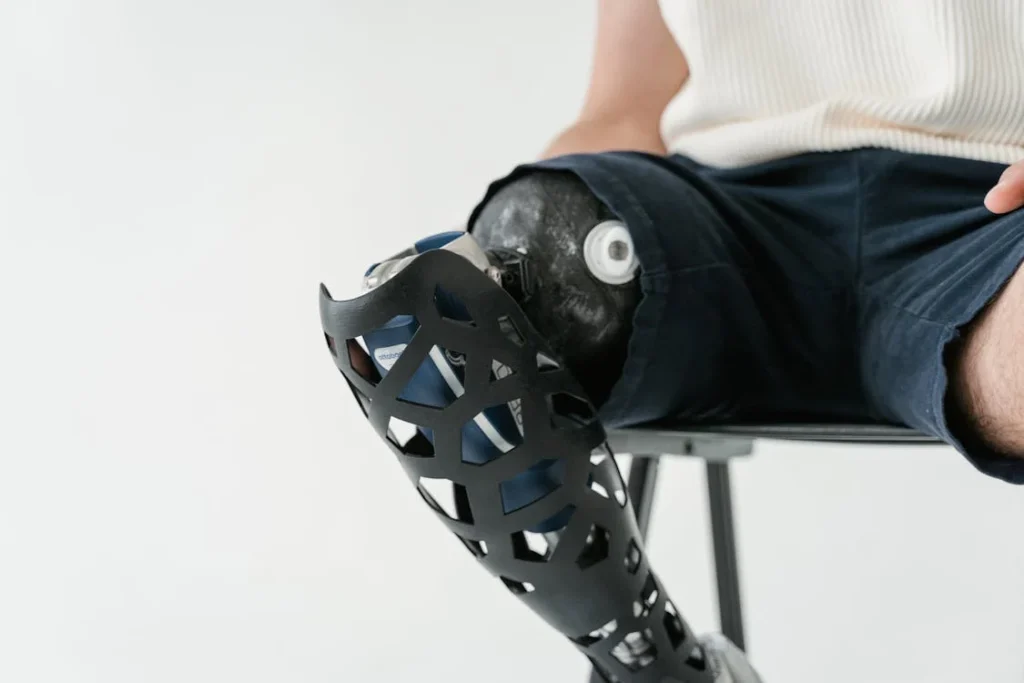
Why the Socket Matters More Than You Think
The Foundation of the Prosthetic Experience
When we think about prosthetics, we often imagine the high-tech hand that moves or the leg that allows someone to walk again. But the truth is, none of that matters if the socket isn’t right.
The socket is the first thing someone feels when they put on a prosthetic. It’s also the last thing they feel when they take it off. It touches the skin, bears the weight, and moves with the body.
If it’s too tight, too loose, or shaped the wrong way, even the most advanced prosthetic can become painful to use.
For many users, the socket is the make-or-break factor in their daily comfort. It determines whether walking feels easy or exhausting, whether movement feels natural or forced.
When designed correctly, the socket disappears—it becomes a natural part of the body. But when it doesn’t fit right, it becomes the biggest reminder of what’s missing.
Small Mistakes, Big Consequences
Even minor misalignments in socket design can cause major issues. A small pressure point can turn into a blister. A slight tilt can affect someone’s posture.
A poor fit can throw off balance, create back pain, or even discourage the user from wearing the prosthetic at all.
What many don’t realize is that these problems often don’t show up right away. They build up slowly. At first, there might just be a little soreness.
But after weeks or months, that discomfort can grow into something more serious—chronic pain, skin breakdown, or joint problems. This is why getting the socket right is not just a short-term concern. It’s a long-term investment in the user’s health and quality of life.
It’s Not Just About Shape—It’s About Movement
Most people think of socket fit as just a matter of shape—how well it wraps around the limb. That’s definitely part of it, but it’s only the beginning.
A good socket must do more than just fit. It must move with the body. That means it needs to respond to changes in muscle tension, weight shifts, and even small changes in limb size throughout the day.
This is where biomechanics come in. Biomechanics is the study of how the body moves. When we apply it to sockets, we look at how the socket supports that movement—or gets in the way of it.
The best sockets don’t just sit on the limb. They work with the limb, flexing slightly when muscles contract, shifting with the body’s center of gravity, and holding firm in the right places to offer stability without pain.
Comfort Isn’t a Luxury—It’s a Necessity
Too often, people think of comfort as something optional in prosthetic care, like an extra feature. But comfort is not a bonus. It’s the foundation. If a user isn’t comfortable, they won’t use their prosthetic regularly.
That leads to muscle loss, joint stiffness, and reduced mobility. In some cases, people even abandon their prosthetics altogether—not because the limb is broken, but because it’s too uncomfortable to wear.
This is why socket design should never be rushed or treated as a one-size-fits-all solution. Every limb is different. Every person moves differently.
That’s why a socket must be designed around the person—not just the measurements, but their lifestyle, goals, and how they want to move.
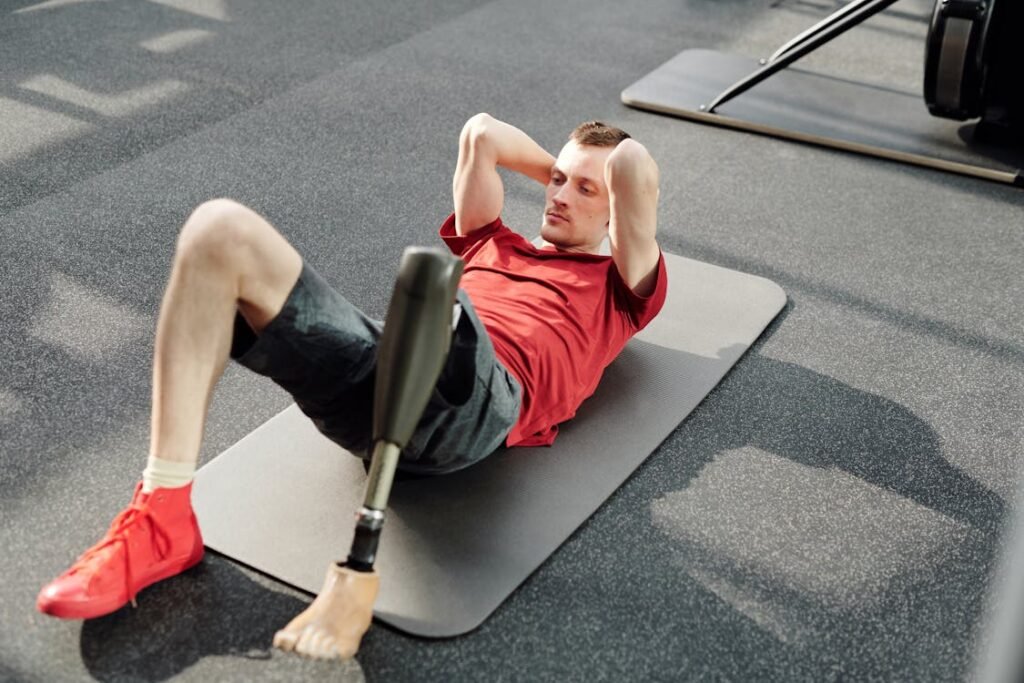
Understanding the Biomechanics of the Socket
The Interface Between Body and Technology
When a socket connects to a residual limb, it becomes more than a shell—it becomes an interface. That interface has to deal with pressure, movement, and friction, all while holding up the weight of the prosthetic.
But here’s the challenge: the human body isn’t rigid. It breathes, it swells, it shifts. Muscles contract and relax, skin stretches and compresses. A well-designed socket must understand and respond to all of that.
Biomechanics helps us design for that reality. It’s the study of how force moves through the body and how parts of the body respond to load. When applied to prosthetics, we use biomechanics to make the socket work with the user’s body instead of pushing against it.
It’s not just about keeping the prosthetic in place. It’s about allowing the user to move naturally, without pain.
Load Distribution and Pressure Management
One of the most important parts of socket biomechanics is load distribution. This refers to how the weight and movement of the prosthetic are spread across the residual limb.
If the load is uneven, certain areas of the limb will experience more pressure than others. That’s when discomfort begins. Over time, it can cause sores, skin damage, or muscle fatigue.
A good socket design balances that load evenly. It uses the strongest areas of the residual limb to bear weight—usually bony structures like the tibia or femur—while reducing pressure on softer, more sensitive areas like muscle or skin folds.
Modern sockets are often shaped to shift pressure away from areas that can’t handle much load, and toward areas that can.
This balance is not easy to achieve. It requires close attention to detail, careful adjustments, and, in some cases, advanced technology like pressure mapping to visualize where force is being applied inside the socket.
Even a small correction—like a millimeter of foam or a minor contouring change—can completely change how the socket feels during daily use.
Suspension Systems and Movement Harmony
Another key biomechanical factor is how the socket stays on the limb. This is called suspension. A poorly suspended socket may shift or twist during movement, leading to chafing or poor control.
Worse, it may feel unstable, like it’s about to fall off. That creates stress, both physically and emotionally.
There are different suspension systems available—vacuum suction, pin-locks, sleeves—and each works in a slightly different way.
But the goal is always the same: to keep the socket snug and stable, without causing too much pressure or limiting movement.
Suspension also affects how the user walks, lifts, and balances. If the socket moves too much or feels too tight, it throws off the user’s gait.
This doesn’t just lead to leg or arm discomfort. It can lead to back pain, hip misalignment, and even posture issues. That’s why matching the right suspension system to the individual’s needs is just as important as shaping the socket correctly.
Adapting to Everyday Changes
One thing many people don’t realize is that the human body changes throughout the day. A limb might swell slightly after activity or shrink slightly in colder temperatures.
Weight may shift. Muscles may get tighter or looser. These small, natural changes can have a big effect on how the socket feels.
When socket biomechanics are done right, the design can adapt to these changes. Materials can help. Flexible inner liners can stretch slightly with the skin, while firmer outer shells keep the shape stable.
Adjustable features like pads or micro-adjustable panels can give users control over the fit as their body changes.
Some prosthetic systems are even designed with smart technology that monitors socket pressure and alerts users or clinicians if there’s a problem.
These innovations are still developing, but they show the direction the field is going—toward more adaptive, responsive designs that grow with the user.
Long-Term Effects of Poor Socket Biomechanics
When socket biomechanics are ignored or poorly handled, the consequences add up over time. Many users experience not just discomfort but long-term damage.
The skin can break down from constant rubbing. Muscles can become imbalanced from unnatural movement patterns. Joints can wear down from poor posture or uneven load.
Even more concerning is how these issues affect a person’s willingness to use their prosthetic. Pain leads to avoidance.
Avoidance leads to reduced activity. Reduced activity can lead to isolation, depression, and health decline. This cycle often starts with something as simple as a poorly designed socket.
That’s why long-term comfort isn’t just a matter of physical design—it’s a matter of health, independence, and dignity.
A well-designed socket helps users stay active, engaged, and confident in their daily life. It supports more than just movement. It supports well-being.
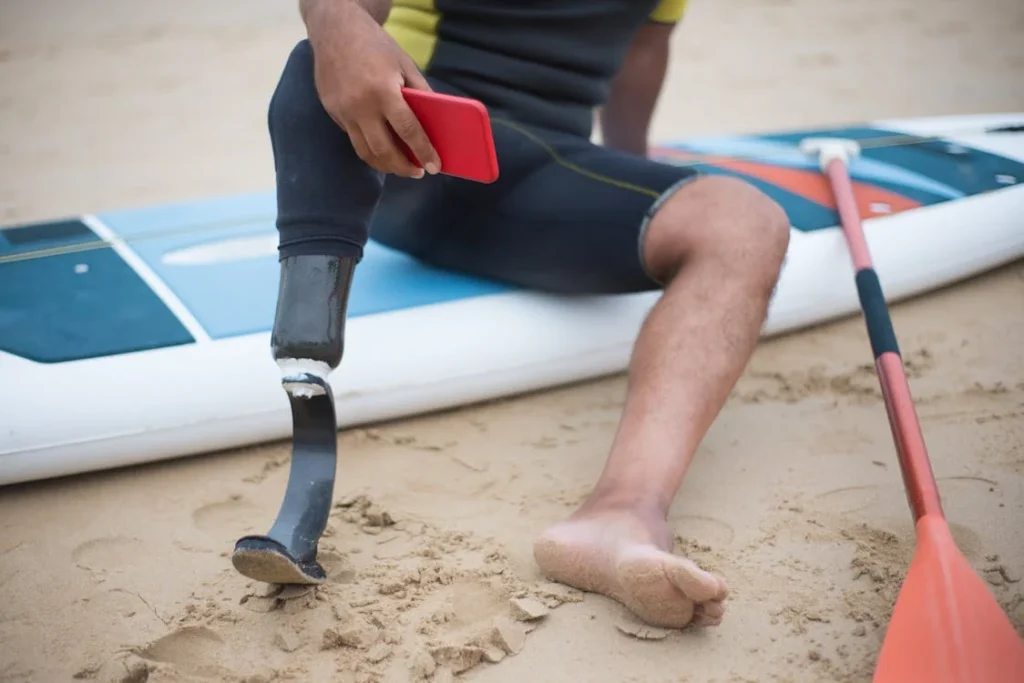
Crafting a Socket That Moves With You
Listening to the Body
Every body is unique. That means every socket must be unique too. What works for one person may not work for another. This is why crafting a good socket starts with listening.
Not just measuring—but truly understanding the way a person moves, what their lifestyle looks like, and what their goals are.
Before any material is shaped or any design is finalized, a deep evaluation is done. We look at muscle tone, skin condition, bone structure, and even how someone walks or moves their arms.
These small details tell us how to support the limb in a way that feels natural. It’s not just about comfort today. It’s about ensuring that comfort lasts for years.
Some people live highly active lives. They climb stairs, ride bikes, or work long hours on their feet. Others may need a prosthetic that’s easier to manage for lighter, everyday use. A good socket must meet the user where they are—not the other way around.
Dynamic Fit and Responsive Design
One of the biggest advances in socket design is the idea of a dynamic fit. Traditional sockets were often rigid and fixed.
Once made, they didn’t change. But the human body is not a fixed shape. That’s why a dynamic fit is such a powerful concept.
A dynamic fit means the socket responds to movement. It gives a little where needed, and holds firm where it counts.
This can be achieved through materials that stretch slightly, padding that adapts to motion, or contours that flex with the body.
It also means the socket is designed with motion in mind. Instead of just holding the limb, the socket should support walking, reaching, lifting, sitting, and standing.
All these motions require different kinds of pressure and support. A good design allows for all of it—without causing pinching, slipping, or restriction.
There are also adjustable systems where users can tweak the tightness or shape of their socket using simple tools.
This lets people adjust for swelling, weather changes, or just the natural rhythm of the day. These designs put power back into the hands of the user.
Material Matters More Than You Think
The materials used in a socket make a big difference. Soft liners, silicone, gel pads, carbon fiber frames—each material brings something different to the experience.
It’s not about picking the most expensive material. It’s about choosing the right one for the user’s skin, strength, and style of movement.
For example, someone with sensitive skin might need a liner that reduces friction. Someone who’s very active might need a more durable shell that doesn’t wear down quickly.
A person with uneven limb shape might benefit from a combination of soft and firm materials to balance comfort and control.
There’s also the matter of temperature. Some materials hold heat more than others. This can be uncomfortable, especially in warm climates.
Breathable materials and ventilated designs help prevent sweating and irritation, which are common complaints among long-term prosthetic users.
The Emotional Impact of Comfort
We often talk about physical comfort, but the emotional side is just as important. When a socket feels good, users feel more confident.
They’re more likely to wear their prosthetic in public, to try new activities, or to go about their day without constantly thinking about their limb.
But when a socket is uncomfortable, it’s always on their mind. Every step becomes a reminder of what’s wrong.
That kind of constant stress wears on a person—not just their body, but their spirit. It creates frustration, limits freedom, and takes a toll on mental health.
That’s why socket comfort is more than a technical goal. It’s a human one. The goal is not just to reduce pain—it’s to restore ease. To help people forget the prosthetic is even there. That’s when true comfort is achieved.
Comfort Isn’t Static—It Evolves
Long-term comfort doesn’t stop at the first fitting. Over time, the body changes. A socket that was perfect one year might not feel the same the next.
Weight gain or loss, muscle growth, or lifestyle changes can all affect how a socket feels.
That’s why ongoing support is key. Follow-ups, adjustments, and sometimes redesigns are part of the journey. A good prosthetics provider doesn’t just deliver a device and walk away.
They stay connected. They check in. They make sure the socket evolves with the user.
That level of care makes all the difference in whether someone thrives with their prosthetic or struggles with it.
Comfort is not a one-time achievement. It’s a long-term relationship—between the user, their prosthetic, and the team behind it.
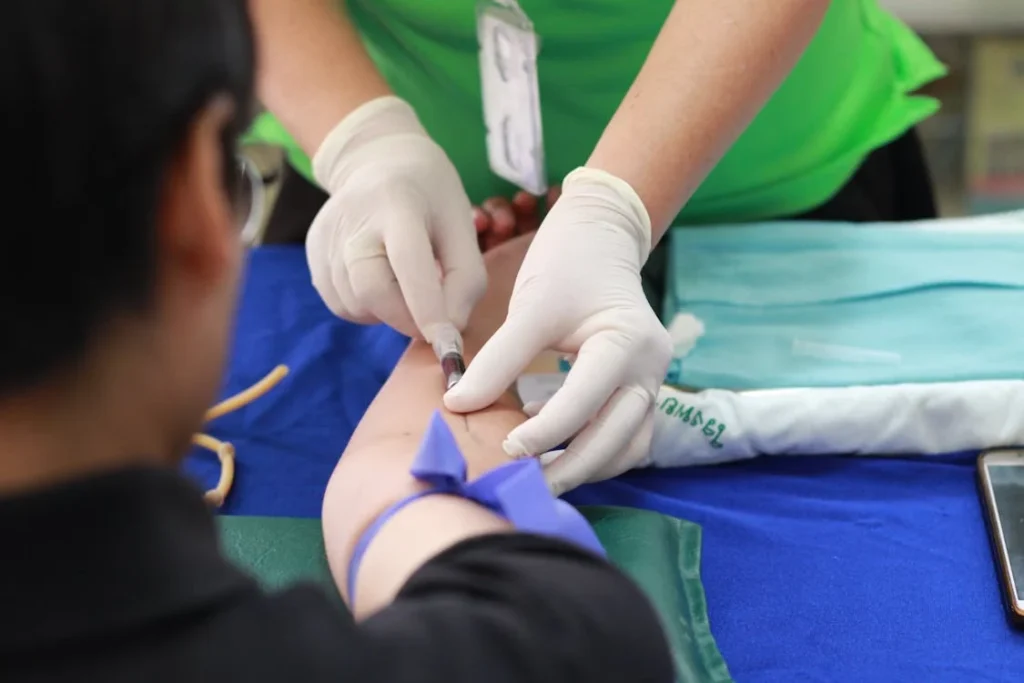
The Role of Clinical Expertise and Technology
Experience Makes a Difference
Behind every comfortable socket is a team that knows what they’re doing. It’s easy to overlook, but clinical expertise is one of the biggest factors in socket success.
The best materials and designs won’t matter if the team building the socket doesn’t fully understand the body they’re working with.
Prosthetists—those who design and fit prosthetics—rely on years of training and hands-on experience to get it right. They know how to read subtle cues in the limb’s shape.
They understand how muscles react under pressure. They can feel where the socket needs to hold tight and where it should let go.
More importantly, they know how to listen. Because every user is different, a big part of getting the socket right comes from understanding the user’s story.
What kind of movements cause pain? When does the socket feel loose? How long can it be worn before discomfort begins? These details can’t be found in numbers or scans. They come from real conversations, and the best clinicians know how to ask the right questions.
Technology as a Helping Hand
While human experience leads the way, modern tools make a big impact. Today’s best prosthetic clinics use pressure mapping, 3D scanning, and digital modeling to enhance their work. These tools don’t replace clinical skill—they support it.
Pressure mapping, for instance, shows exactly where the socket is applying force. If one area lights up red, it means the pressure is too high.
That information helps adjust the fit in ways that are precise and effective. It also gives the user visual proof of what’s happening, which builds trust and understanding.
3D scanning is another game-changer. It creates an exact digital model of the residual limb. That model can be used to build a socket that mirrors every curve, dip, and rise of the body.
Combined with 3D printing, this allows for faster, more personalized designs that reduce the need for repeated adjustments.
Even motion analysis tools can now be used to study how someone walks with their prosthetic. These insights guide socket alignment and shape so that the user’s movements stay natural and balanced.
A Process, Not a Product
A lot of people think of the prosthetic socket as something that’s “delivered.” But that’s not quite right. It’s not just a product—it’s a process. It begins with an evaluation, but it doesn’t end there. Fitting, testing, adjusting, and sometimes remaking are all part of the journey.
Some users try multiple sockets before finding the one that works. That’s not a failure—that’s part of the process. It’s like trying on shoes.
You don’t know how a pair really feels until you’ve walked in them. The same goes for sockets. What feels fine in the clinic might feel different at home, after a long walk, or after a full day of standing.
That’s why follow-up care is just as important as the first fitting. The goal is not just to get it right once—it’s to keep it right over time.
That requires a team that stays involved, checks in regularly, and makes it easy for the user to speak up when something doesn’t feel right.
Empowering the User
Comfort doesn’t just come from design. It comes from confidence. And confidence comes from knowledge. When users understand how their socket works—and how it should feel—they can spot problems early and ask for help.
That’s why education is key. Users should know what pressure is normal and what’s not. They should know how to put on their socket correctly, how to care for the skin around it, and how to notice signs of trouble.
This kind of awareness prevents small issues from turning into big ones.
Good clinics also offer tools to support this learning—mirror checks, simple self-assessment guides, and open lines of communication.
In some cases, apps and digital trackers can help users keep logs of comfort levels, wear time, or skin issues. These logs give valuable feedback that leads to better care.
The more the user knows, the more they can partner in their own success. Comfort becomes a shared goal, not a one-sided promise.
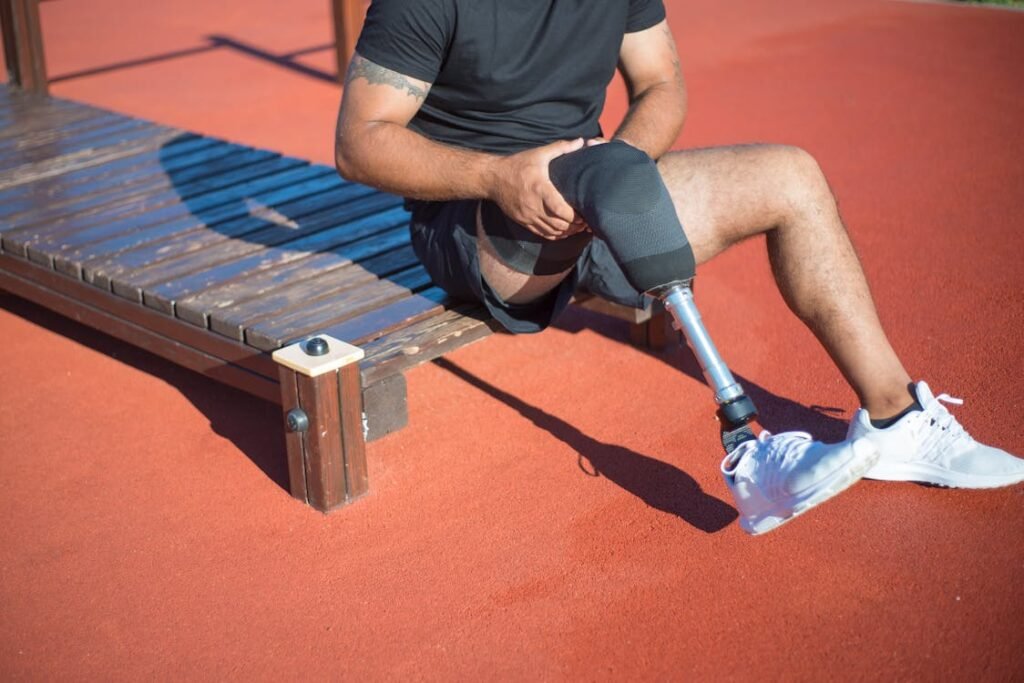
Designing for Real Life: How Daily Habits Influence Socket Biomechanics
Comfort Isn’t Just About Standing Still
Many socket designs are tested in clinic settings—walking down a hall, standing for a few minutes, or doing basic movements.
But life doesn’t happen in a controlled space. People bend down to tie shoes, sit in meetings, wait in traffic, chase kids, and sometimes stand for hours at work. Comfort has to survive all of that.
That’s where lifestyle-driven design becomes essential. We need to understand how the prosthetic will be used every single day, not just during a clinic fitting.
Someone working in retail will have very different comfort needs than someone sitting at a desk. A farmer moving through uneven fields will need different support than a college student walking campus sidewalks.
If a socket only works in perfect conditions, it’s not a good socket. It has to work through sweat, stairs, long walks, naps, and rainy days. That kind of performance doesn’t come from guesswork—it comes from studying how real people live.
Sitting, Standing, and Everything In Between
One overlooked factor in socket discomfort is how it behaves when someone is sitting. A socket that feels fine when upright might dig into the skin when the user takes a seat.
The front edge can press into the thigh, or the back may create pressure behind the knee. Over time, these small issues become big frustrations.
For lower-limb users, sitting comfort is huge. A flexible brim or carefully angled edge can make sitting smoother. For upper-limb sockets, the ability to reach forward or rest the elbow on a table without pinching is just as important.
Standing for long periods also demands attention. The socket must hold its shape and distribute weight in a way that keeps the limb supported without causing numbness or hot spots. For users on their feet all day, even small pressure shifts become a problem if left unchecked.
That’s why good socket design always looks at extremes—maximum movement, minimum movement, and everything in between.
Movement Memory and Wear Patterns
Our bodies develop habits. We reach for things in a certain way. We lean on one leg. We carry a bag on one shoulder.
These repetitive patterns affect how we use our prosthetic, and over time, they create wear marks—not just on the device, but on our skin and muscles.
Socket biomechanics can be shaped to respond to those patterns. For example, if someone always steps slightly harder on their left side, that can be offset in the socket’s structure to absorb more force on that side.
If the limb swells after long periods of walking, the socket can include areas designed to expand slightly, reducing pressure without loosening the whole fit.
It’s also possible to rotate or contour the socket in small ways to support movement preferences. This may seem minor, but it has a big impact on long-term ease and posture.
This kind of customization comes from close observation—watching how the person moves in real life, not just in the clinic.
Videos, wearable trackers, or even user journals can offer insight into how they walk, sit, stand, and move throughout their day. That information turns good design into great design.
Seasonal and Environmental Changes
Comfort isn’t just personal—it’s also seasonal. In places like India, where temperatures and humidity can swing dramatically between seasons, the socket has to be ready to adapt.
In hot weather, skin can swell and sweat more, increasing friction and irritation. In cooler months, limbs may contract slightly, creating gaps that lead to wobble or instability.
Materials and venting features play a huge role here. Some liners are built to wick moisture. Others have tiny vents to allow airflow.
A breathable socket keeps the limb cooler and prevents overheating, which can otherwise lead to skin rashes or infections. This matters more than people realize. A sweaty, sticky socket is not just unpleasant—it’s a barrier to regular use.
For users who live in different climates, sockets may even need seasonal tuning. A slightly roomier fit for hot months, or a tighter fit when layers of clothing are worn in the cold, can make everyday life easier.
This kind of environmental design shows that comfort doesn’t happen in isolation. It happens in context—in real, often unpredictable conditions. That’s where thoughtful biomechanics can really shine.
Cultural Movements and Common Poses
In countries like India, people often sit cross-legged, crouch, or squat for daily tasks. These are not typical test movements in Western-style clinics. But for Indian users, these poses are part of life. Socket designs must respect that.
A socket that’s too rigid or poorly contoured may block these poses, making it harder to participate in cultural practices, household chores, or even basic routines like using a floor toilet. When this happens, the socket becomes a limitation, not a support.
To avoid this, socket biomechanics must be shaped with culture in mind. Designers must ask questions like: Can this user kneel comfortably? Can they sit on the floor? Will the socket dig into the thigh during a squat? These details aren’t minor—they’re part of what makes the socket feel like a natural extension of the body.
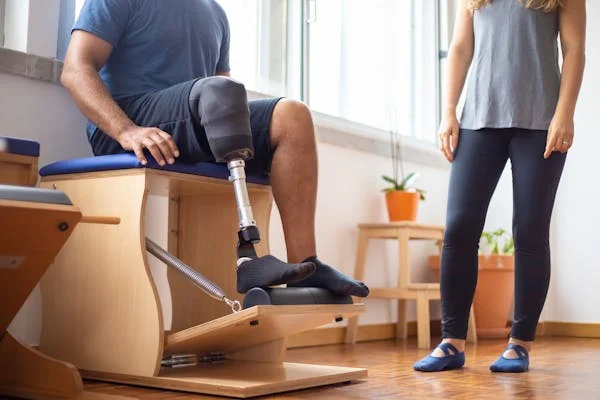
Conclusion
Comfort in a prosthetic doesn’t come from guesswork—it comes from understanding. The socket is where the body meets the machine, and when that connection is shaped by good biomechanics, it changes everything. It’s not just about walking or moving. It’s about doing so without pain, without hesitation, and without being reminded at every step that something isn’t quite right.
True comfort lasts beyond the clinic. It lives in daily routines, in movement that feels natural, and in the confidence to live fully. And that comfort starts with a socket designed not just around the limb, but around the life of the person wearing it.
At Robobionics, we believe every person deserves a prosthetic that feels like a part of them—not a compromise. That’s why we focus not just on technology, but on people, movement, and meaning. Because when the socket fits right, everything else falls into place.



